There is no better way to keep your zinnias looking beautiful and blooming all summer long that to deadhead them on a regular basis. Not only will this simple task leave your plants looking better in the short term, it will also keep them in a constant supply of gorgeous blooms!
Zinnias are annual plants that are well known as “cut and come again” flowers. That means that the more you remove their spent blooms – or deadhead them – the more blooms they will produce.
Deadheading is a practice that helps to encourage zinnias and other annuals to focus their energy in the right place. Instead of using resources to turn those spent blooms into seed heads, the plants can focus on creating new blooms.
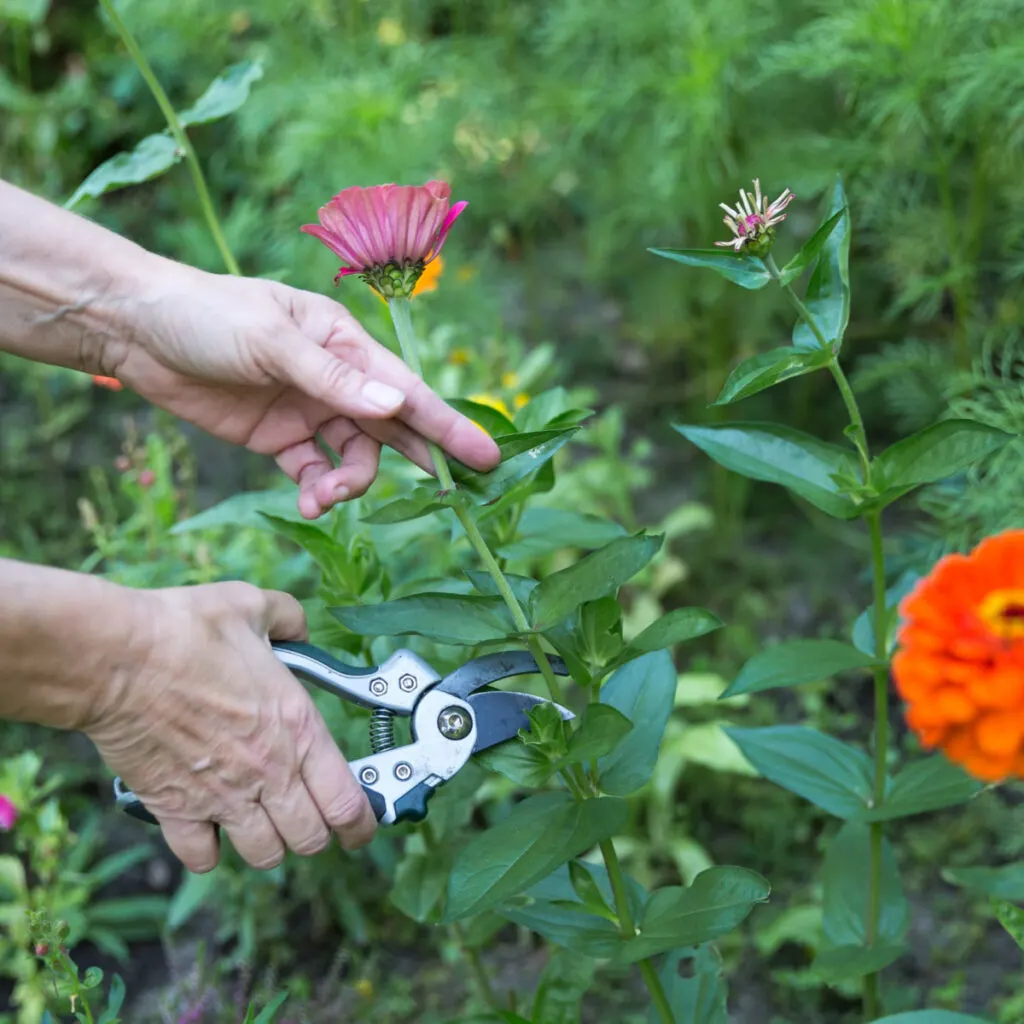
Along with consistent watering and fertilizing, deadheading your plants regularly can make a huge difference in just how well your plants perform late into summer and early fall. Not only does deadheading rejuvenate the bloom set, it also keeps your plants healthier overall by allowing them to use the nutrients they get where it matters most.
Why Deadhead Zinnias?
So why exactly is deadheading so important to zinnias? To begin with, it takes annual plants like zinnias a ton of energy and resources to create new foliage and flowers. Resources like water and nutrients from the soil that are not always limitless.
Even when the blooms start to fade and die, zinnias continue to send energy to try to “heal” the blooms. This sending of resources continues until the blooms are removed or they fall off altogether. Some dead blooms can hang onto plant for weeks after they have died – and it can cause the plant to burn and waste an enormous amount of energy.
But when you deadhead its spent blooms, you are allowing the plant to once again focus its energy on creating new blooms as opposed to “healing” dying ones. Essentially, the more you deadhead, the more new blooms you will see on your zinnia plants.
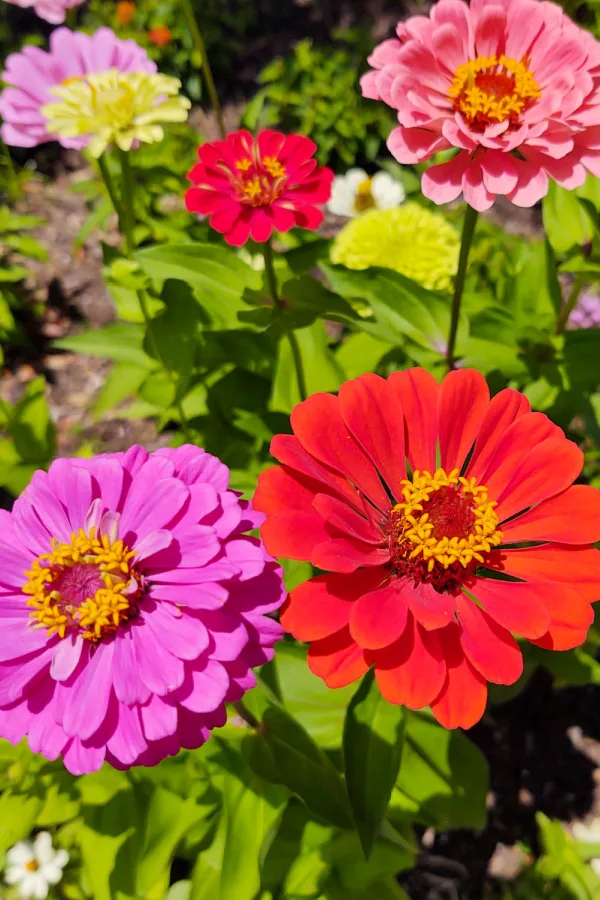
Deadheading your zinnias also benefits important pollinators that visit your flowerbeds and gardens. The more you keep your zinnias blooming, the more you will continue drawing in pollinators that help the other flowers and vegetables growing nearby. (See “Why You Should Grow Zinnias In Your Vegetable Garden“)
The best part of all? Deadheading is one of easiest of all garden chores you will ever perform. In fact, it only takes a couple of minutes as you walk through your beds to clear your plants of old flowers, and set the stage for amazing new blooms to come on!
How To Deadhead Zinnias
One of the most important parts of deadheading zinnias is to start early in the season and stay consistent.
There are actually two ways to deadhead zinnias to keep them blooming. The first is to simply snip off the flowers and stems when they are bright and vibrant to use as cut flowers. This will allow you to have a beautiful vase full of colorful blooms to display in your home time and time again throughout the growing season.
When cutting for flowers, one thing you don’t want to do is cut the blooms too late. The best way to know when zinnia blooms are ready to be cut for displays is to do a simple “wiggle test.”
Take hold of the zinnia stem about 5 to 6 inches below the flower head. Lightly wiggle the stem back and forth. If the bloom wobbles a lot, it’s a sign that the bloom is old and will not stay in a vase long. However, if the flower head seems to be fairly rigid and doesn’t seem overly top-heavy, it’s a great sign the flower will be great for a vase!
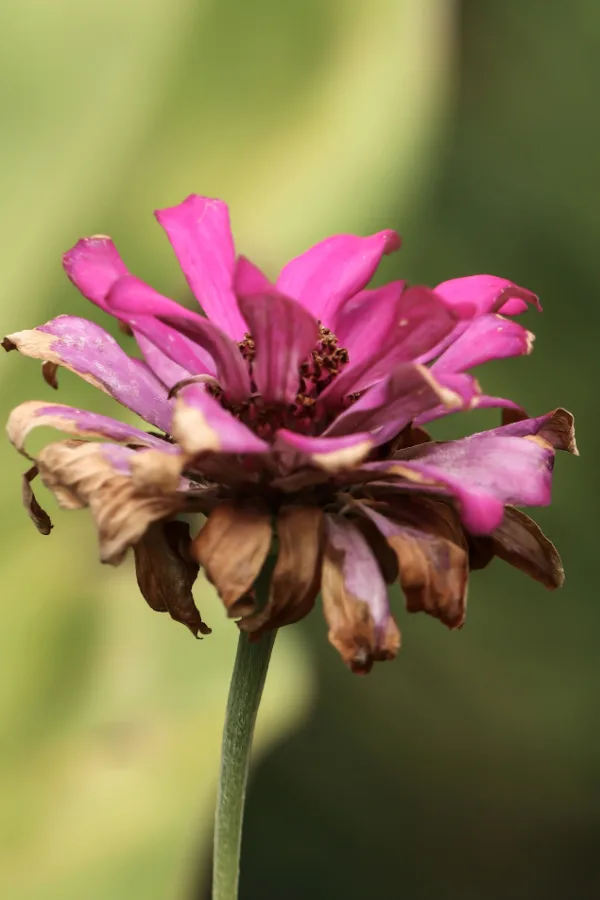
Another way to tell if a bloom is past it’s prime for using as a cut flower is if the center of the bloom has tiny flowers forming. This too means the flower is past it’s prime. When cutting zinnias for cut flowers, it’s best to cut early in the morning when plants are at their optimum condition.
Deadheading Spent & Dying Blooms
If you are not cutting your zinnias for flowers, you will need to do traditional deadheading. This of course is simply removing old flowers as they die off. Again, the earlier in the process you do this, the better.
As soon as you see early flowers begin to die back or droop, it’s time to starting removing them. A good rule of thumb any blooms that start to turn brown around the edges are ready for deadheading. Browning is the first sign that a flower’s bloom period is coming to an end.
Now that you know which blooms on your zinnias to deadhead, it’s time to actually do it!
Some annual flowers like petunias have thin stems that you can easily pinch off using your fingernails. Unfortunately, zinnias stems are a bit tougher. Therefore, you are better off using clean pruners or a pair of sanitized scissors for deadheading. (Affiliate Link: Fiskars Micro-Tip Pruning Snips)
But don’t just snip off the zinnia flower right behind the bloom head. Not only does the remaining stem look unattractive, the plant will continue to send resources to the empty stem.
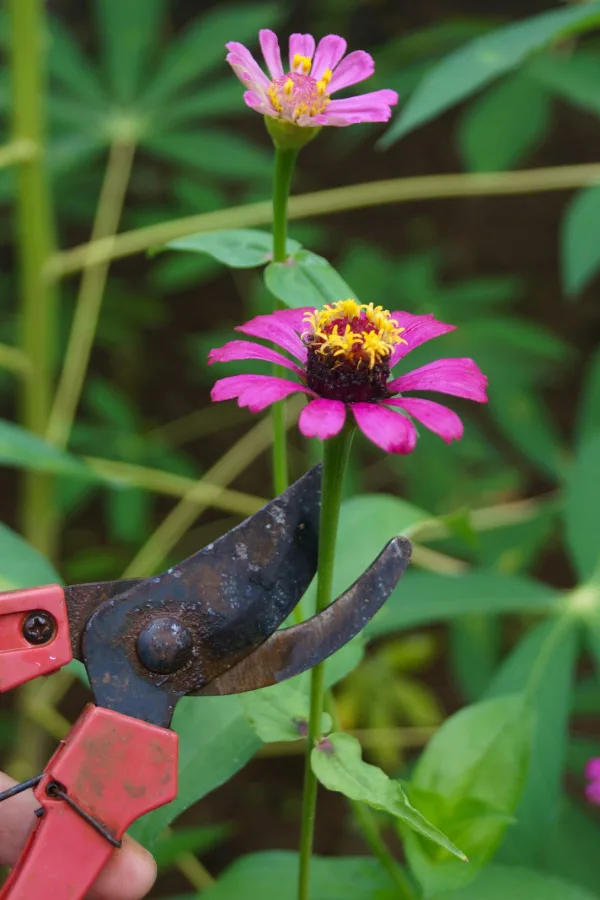
Instead, use the pruners to cut the zinnia off down where the stem meets the rest of the plant. You can usually just follow the stem back to where is joins and cut there.
Continue checking plants and deadheading your zinnias weekly – right up until the first frost. By being consistent in your approach, it will help plants stay fresh and conserve the most resources possible. Even more, it will have them blooming more than ever!
What To Do With The Deadheaded Blooms – How To Deadhead Zinnias
While it might be tempting, do not throw the deadheaded blooms into your home compost pile.
Zinnia flower heads are filled with tons of seeds that appear once the heads are dry. Most home compost piles aren’t able to get hot enough to completely kill off the seeds. This really applies to any type of seed head you throw into your compost pile.
Having all of those seeds in your compost pile will result in tons of volunteer zinnia plants wherever you eventually use your finished compost in the future. Instead, you can either create a compost pile for material that won’t be used on your garden or many communities have locations to dispose of plant and tree material.
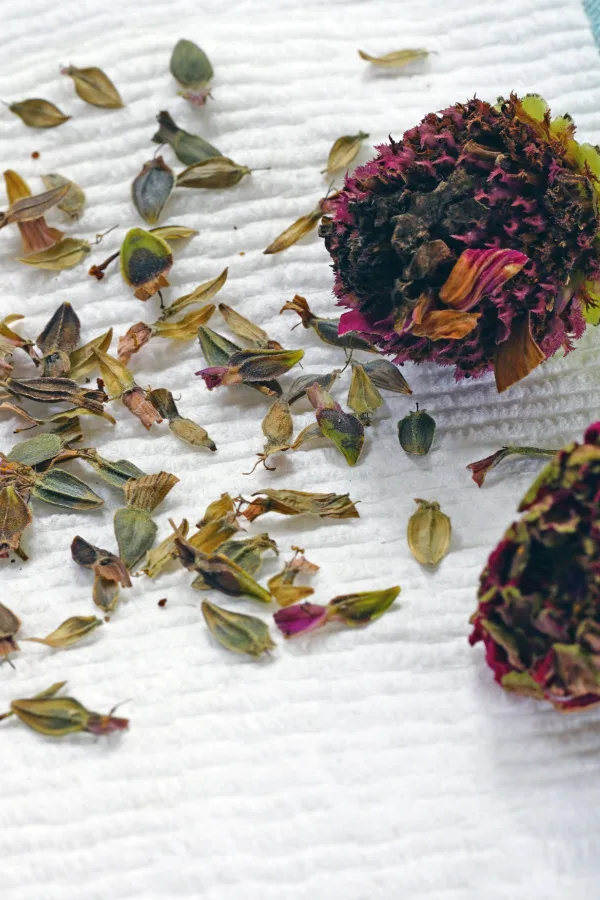
Another great option is to save some of your seeds to plant and grow the next year. Simply allow the heads to dry out in a cool, dry location. Once the heads are dry, separate the seeds and allow them to dry out a little more before storing.
You can store your zinnia seeds in a paper envelope or brown paper bag in a dark. Wherever you store them, make sure it is not a location that gets too hot. This can actually harm the seeds and make them less likely to germinate. Use any saved zinnia seeds within a few years for maximum germination and flowering.
Here is to deadheading your zinnia plants, and having them stay beautiful and vibrant all throughout the summer and fall!
Follow Our Facebook Page For Even More Great Tips! Simple Garden Life Facebook Page
Simple Garden Life is a website dedicated to keeping gardening fun, simple and enjoyable! We publish two new articles each week along with a new garden podcast episode every two weeks. This article may contain affiliate links.
